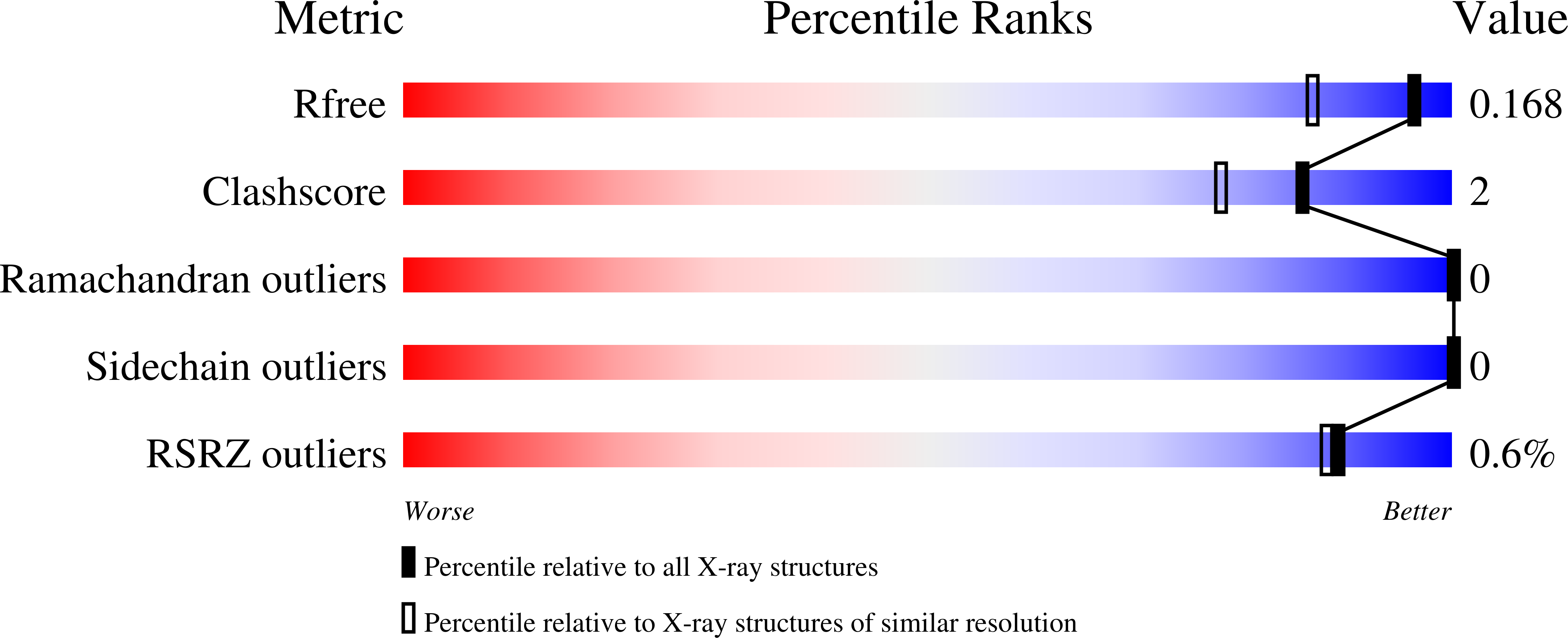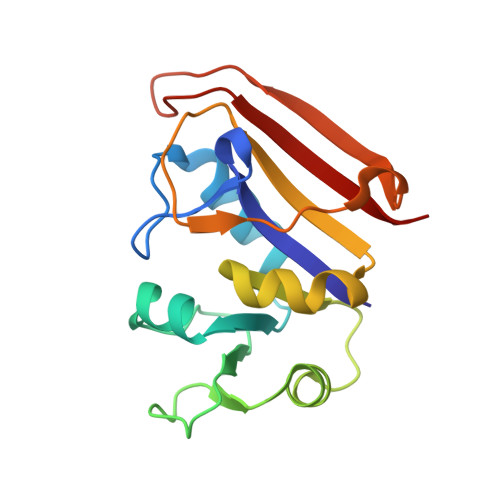Defining the Structural Basis for Allosteric Product Release from E. coli Dihydrofolate Reductase Using NMR Relaxation Dispersion.
Oyen, D., Fenwick, R.B., Aoto, P.C., Stanfield, R.L., Wilson, I.A., Dyson, H.J., Wright, P.E.(2017) J Am Chem Soc 139: 11233-11240
- PubMed: 28737940
- DOI: https://doi.org/10.1021/jacs.7b05958
- Primary Citation of Related Structures:
5W3Q - PubMed Abstract:
The rate-determining step in the catalytic cycle of E. coli dihydrofolate reductase is tetrahydrofolate (THF) product release, which can occur via an allosteric or an intrinsic pathway. The allosteric pathway, which becomes accessible when the reduced cofactor NADPH is bound, involves transient sampling of a higher energy conformational state, greatly increasing the product dissociation rate as compared to the intrinsic pathway that obtains when NADPH is absent. Although the kinetics of this process are known, the enzyme structure and the THF product conformation in the transiently formed excited state remain elusive. Here, we use side-chain proton NMR relaxation dispersion measurements, X-ray crystallography, and structure-based chemical shift predictions to explore the structural basis of allosteric product release. In the excited state of the E:THF:NADPH product release complex, the reduced nicotinamide ring of the cofactor transiently enters the active site where it displaces the pterin ring of the THF product. The p-aminobenzoyl-l-glutamate tail of THF remains weakly bound in a widened binding cleft. Thus, through transient entry of the nicotinamide ring into the active site, the NADPH cofactor remodels the enzyme structure and the conformation of the THF to form a weakly populated excited state that is poised for rapid product release.
Organizational Affiliation:
Department of Integrative Structural and Computational Biology and Skaggs Institute for Chemical Biology, The Scripps Research Institute , 10550 North Torrey Pines Road, La Jolla, California 92037, United States.
















